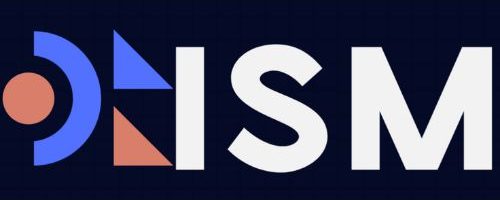Unlock the Power of Supply Chain Demand Planning
Today, the boardrooms of the United States recognize the critical role of supply chain demand planning in driving enterprise value. Amid ongoing volatility, companies focus on demand forecasting that ties service, cost, and cash to tangible results. Studies by McKinsey, Gartner, and the Federal Reserve highlight the benefits of disciplined supply chain management. These include shorter lead times, improved quality, and better protection of working capital.
Leaders at Amazon, Apple, Walmart, Procter & Gamble, IKEA, Tesla, Maersk, and UPS have mastered the art of converting operational excellence into financial gains. Their strategies combine network design, S&OP, strategic sourcing, and AI- and ML-enabled demand sensing. These efforts have led to 8–12% better forecast accuracy and 12–18% fewer stockouts. This, in turn, enhances cash flow and maintains consistent service levels.
The COVID-19 pandemic, tariff changes, port issues, and freight shortages have underscored the importance of end-to-end coordination. This coordination, from sourcing to last-mile and returns, relies on shared data, robust master data, and effective policy governance. By continuously managing risks and refining demand forecasting, companies can improve on-time delivery. This aligns supply chain management with key financial goals like revenue, margin, and working-capital targets.
Why Demand Planning Now: Boardroom Priorities, Volatility, and Competitive Advantage
Boardroom agendas have evolved significantly, driven by ongoing disruptions and increased demand variability. Supply chain demand planning is now viewed as a critical performance driver, not just an ancillary function. The goal is to stabilize service levels, protect profit margins, and guide production with data-driven insights.
Studies by McKinsey and Gartner highlight a shift from reactive to proactive strategies. Executives recognize the link between supply chain optimization and financial health, including cash flow and capital efficiency. Companies like Amazon, Apple, and Walmart exemplify how disciplined planning can reduce lead times while maintaining quality and delivery reliability.
From disruption to discipline: lessons from COVID-19, tariffs, and port blockages
The COVID-19 pandemic, U.S.–China tariffs, and port congestion revealed systemic weaknesses in supply chains. To address these, companies have fortified their demand profiles, diversified routes, and expanded regional distribution centers. This has enabled them to better manage cycle times and absorb shocks through continuous demand planning.
End-to-end alignment to cut costs, reduce lead times, and enhance service reliability
Implementing cross-functional planning has streamlined the process from forecasting to execution. This includes synchronized purchasing, factory scheduling, and transportation planning. The use of shared calendars and models that account for constraints has improved capacity utilization and supplier reliability. The outcome is clear: reduced costs, shorter lead times, and more consistent service levels.
How executives link supply chain performance to financial metrics
Leaders monitor key performance indicators (KPIs) such as on-time delivery, perfect order rate, and forecast accuracy. These are tracked alongside financial metrics like revenue retention and margin. Inventory turnover and cash conversion are analyzed together to optimize working capital. Scenario planning connects production decisions to service reliability and cost, guiding strategic decisions and investments.
Defining the Modern Framework: From Sourcing to Last-Mile with Unified Data
A modern operating model integrates sourcing, production, distribution, and last-mile delivery on a single data layer. This approach links strategy with daily operations across supply chain management, demand planning, predictive analytics, and inventory control. It aims for measurable business outcomes.
End-to-end scope: supplier qualification through returns and after-sales
The framework starts with supplier qualification and sourcing decisions. It then moves through manufacturing, regional distribution, and final-mile delivery. It concludes with reverse logistics, including returns, repairs, and after-sales service.
EDI and API integrations with carriers like Maersk and UPS track milestones from port to porch. Control towers consolidate alerts, enabling quick issue resolution. This limits the need for expedites and manual checks while ensuring inventory control standards.
Shared data, robust master data, and policy governance for synchronized flows
Unified data layers rely on strong master data, clear ownership, and policy governance. Standardized item, location, and supplier records align material, information, and cash flows across various stakeholders.
AI, IoT sensors, and predictive analytics provide real-time status updates. This enhances demand planning and supports workflows that maintain pace across different nodes.
Primary objectives: total landed cost, compressed lead time, stable quality, dependable delivery
The framework aims to lower total landed cost through network choices and order policies. It achieves compressed lead times through synchronized handoffs and streamlined customs and compliance.
Stable quality is ensured by digital checks, vendor scorecards, and in-line testing. Dependable delivery is built on accurate ATP, coordinated carrier selection, and disciplined inventory control. This prevents stockouts and excess.
| Framework Element | Operational Practice | Data Enabler | Financial Effect | Service Effect |
|---|---|---|---|---|
| Sourcing to Qualification | Multi-criteria supplier selection and audits | Master supplier records and scorecards | Reduced total landed cost variance | Fewer quality escapes |
| Production to Distribution | Synchronized MRP and finite scheduling | Unified BOM, routings, and inventory control data | Lower WIP and holding costs | Shorter cycle times |
| Transport and Last-Mile | Dynamic carrier and mode selection | Real-time APIs with Maersk and UPS | Reduced expedite spend | Higher on-time delivery |
| Reverse Logistics | Streamlined returns and refurbishment | Serialized tracking and predictive analytics | Recovered value from returns | Faster after-sales resolution |
| Planning Cadence | Weekly consensus and daily exceptions | Control tower with supply chain demand planning inputs | Lean working capital | Reliable promise dates |
Key KPIs That Matter for Demand Planning and Execution
Executives focus on a few key metrics that link operations to cash flow and service quality. These KPIs guide strategic decisions, resource allocation, and inventory control across the network. They are essential when combined with disciplined demand forecasting and inventory optimization. This combination is the backbone of effective supply chain optimization.
On-time delivery, perfect order rate, and end-to-end lead time
On-time delivery (OTD) is critical for retaining customers and boosting revenue by meeting delivery promises. The perfect order rate—complete, undamaged, and accurate—reduces returns and service credits. End-to-end lead time, from order to receipt, measures the system’s responsiveness.
Improving these metrics involves optimizing carriers, standardizing pack-out in WMS, and ensuring accurate available-to-promise in planning systems from SAP and Oracle. Redesigning the network and synchronizing schedules can also reduce lead time while maintaining service levels.
Inventory turnover and forecast accuracy as drivers of cash flow and service
Higher inventory turnover frees up working capital and reduces the risk of obsolescence. Accurate forecasting at the SKU or family level minimizes stockouts and excess, boosting fill rates and margins.
Machine learning in platforms from Blue Yonder, Kinaxis, and o9 Solutions enhances demand forecasting. Multi-echelon inventory optimization increases turnover without compromising service. Tight inventory control prevents waste in both fast and slow movers.
Typical levers: carrier optimization, multi-echelon optimization, and synchronized production planning
Carrier optimization balances cost with on-time delivery by using mode mix, tender discipline, and reliable lanes. Multi-echelon optimization places safety stock where variability is lowest, protecting service at minimal cost.
Synchronized production planning aligns finite capacity with demand signals, shortening queues and reducing changeovers. These efforts, managed through S&OP, reinforce supply chain optimization and keep KPIs in view for finance and operations.
Technology Advantage: AI, Demand Sensing, and Predictive Analytics in Practice
Modern teams harness AI to refine forecast cycles and diminish data-to-decision latency. By merging real-time data with demand sensing and predictive analytics, they enhance the quality of signals within supply chain demand planning. This approach propels supply chain optimization.
Retailers and CPG leaders integrate point-of-sale feeds, promotions, weather, special events, and social activity. Machine learning models transform these inputs into weekly and even daily plans. These plans support faster replenishment and leaner inventory.
AI-enabled demand forecasting that fuses POS, promotions, weather, and events
Unilever aligns freezer inventory for ice cream with temperature swings and local events. Gradient boosting and LSTM models track demand lifts from heat waves and holidays. This reduces spoilage while keeping shelves stocked. The same stack refines promotional lift curves at SKU and store level.
Nike reports notable gains after data quality upgrades in planning systems. Cleaner POS, master data, and calendarized promotions raised forecast accuracy by about 10%. This improvement enhances allocation and markdown control. These practices anchor repeatable processes in supply chain demand planning.
Real-time agility: control towers, exception alerts, and scenario simulators
Global control towers consolidate telemetry from inventory, transport, and production. Exception alerts highlight stockout risk, late loads, and demand spikes. This allows planners to act within minutes, not days. Scenario simulators test supplier delays, price changes, and weather disruptions against service and margin.
o9 Solutions deployments enable consensus forecasts and end-to-end scenario planning across sales, operations, and finance. Hyper-automation blends AI, RPA, and intelligent BPM to remove manual touches. This speeds approvals and reallocations that support supply chain optimization.
Evidence of impact: improved forecast accuracy and reduced stockouts with ML
McKinsey analysis of autonomous planning cites revenue lift near 4%, inventory reductions around 20%, and supply chain cost cuts near 10% for adopters. These outcomes stem from tighter signal capture, faster exception handling, and smarter replenishment.
Predictive maintenance keeps lines and fleets available, protecting service reliability. When combined with demand sensing and predictive analytics, uptime gains translate into fewer missed orders and leaner buffers. This reinforces supply chain demand planning discipline.
| Capability | Primary Data Inputs | Analytic Methods | Operational Effect | Business Outcome |
|---|---|---|---|---|
| Short-horizon forecasting | POS, promotions, weather, events, social | Gradient boosting, RNN/LSTM | Daily/weekly signal updates; promo lift calibration | Higher accuracy, fewer stockouts |
| Control tower and alerts | Inventory, orders, shipments, IoT, ERP | Anomaly detection, risk scoring | Rapid triage of supply-demand gaps | Faster response, stabilized service |
| Scenario simulation | Network constraints, lead times, costs | What-if modeling, stochastic demand | Policy tests for allocation and replenishment | Better trade-offs in supply chain optimization |
| Hyper-automation | Workflows, approvals, transactional logs | AI + RPA + intelligent BPM | Reduced manual touches and cycle time | Lower planning costs, improved throughput |
| Predictive maintenance | Sensors, maintenance logs, telematics | Failure prediction, survival analysis | Higher equipment and fleet uptime | Reliable service with leaner buffers |
- Embed demand sensing in daily S&OE to guard against sudden shifts.
- Use predictive analytics to align replenishment with promo calendars and local weather.
- Link control tower exceptions to playbooks that trigger automated actions.
- Continuously validate models against forecast bias and service-level targets.
Planning Foundations: Demand Planning, S&OP, and Network Design that Work
Effective planning integrates demand forecasting, production planning, and supply chain management into a unified rhythm. Teams leverage predictive analytics to transform market signals into actionable schedules and costed decisions. The success of this approach hinges on data integrity, usability, and widespread adoption across the enterprise.
Blending statistical methods with machine learning to reduce bias and error
Forecasters blend ARIMA, exponential smoothing, and moving averages with gradient boosting and LSTM models to diminish MAPE and WMAPE. This combination captures the nuances of seasonality, price effects, and event lifts from POS, orders, weather, and promotion calendars. Predictive analytics provides daily updates to production planning, reflecting capacity constraints and lead times.
Bias control is achieved through holdout tests and rolling-origin evaluations. Procter & Gamble and Walmart teams apply these methods to distinguish true demand shifts from noise. This results in tighter confidence ranges, enabling safer inventory levels and faster cycle times.
S&OP for consensus planning across sales, operations, and finance
Monthly S&OP, or IBP, aligns volume and value plans. Scenario modeling compares upside, base, and downside cases, linking procurement volumes and build schedules to OTIF and cost-to-serve. Finance then validates revenue, margin, and working capital impacts before executive approval.
Constraint analysis tests labor, line rates, and supplier capacity. When demand forecasting signals a surge, supply chain management evaluates overtime, alternate suppliers, or postponement. This approach enhances service while safeguarding cash and cost.
Network design using optimization and simulation to balance cost and service
Mixed-integer programming and discrete-event simulation evaluate facility locations, cross-docks, port choices, and transport modes. UPS, Maersk, and DHL teams use these methods to quantify the trade-offs between response time and landed cost. Periodic redesigns reflect channel shifts, near-shore options, and fuel curves.
Design outputs guide production planning and replenishment lanes. By testing bottlenecks and queue times, teams set realistic service targets and inventory buffers. This approach establishes a resilient baseline for supply chain management without overbuilding assets.
| Planning Layer | Primary Methods | Key Inputs | Operational Outputs | Performance Metrics |
|---|---|---|---|---|
| Demand Planning | ARIMA, exponential smoothing, gradient boosting, LSTM | POS, orders, weather, price, promotions | Forecasts by SKU-location, confidence bands | MAPE, WMAPE, bias |
| S&OP / IBP | Scenario modeling, constraint analysis, capacity balancing | Forecasts, labor and line rates, supplier capacity, cost-to-serve | Unified build schedules, procurement volumes, allocation rules | OTIF, margin, working capital |
| Network Design | Mixed-integer programming, discrete-event simulation | Transport rates, service targets, facility costs, demand by lane | Facility footprint, mode mix, cross-dock strategy, port selection | Total landed cost, lead time, asset utilization |
Inventory Optimization Strategies that Balance Service and Working Capital
Firms aim for higher service levels while managing cash cycles tightly. They achieve this by aligning inventory optimization with strict inventory control. This approach is based on demand variability, lead-time reliability, and supply chain demand planning goals. Reliable data and clear governance are key to making parameter changes that align with business cycles.

From just-in-time to just-in-case: when to build buffers
Just-in-time is suitable for stable suppliers and short, predictable lead times. It frees up working capital and reduces holding costs. Yet, when ports are congested or components are scarce, just-in-case buffers are essential. They protect service levels without excessive spending.
Scenario modeling helps determine buffer sizes across different lanes and SKUs. Teams evaluate service targets against demand variability and lead-time risks. This approach sets minimum and maximum buffer sizes that adapt to promotions or seasonal changes.
Safety stock tuning, ABC analysis, and cycle counting for accuracy
Safety stock is adjusted using probabilistic methods that consider forecast error, supplier lead-time variance, and desired fill rate. These methods provide clear targets for planners and buyers, turning volatility into manageable goals.
ABC analysis focuses on high-value A-items, while maintaining flow for B and C items. Regular cycle counting ensures accurate records without halting operations. This maintains reliable signals for replenishment and finance.
Vendor-managed inventory, consignment, and multi-echelon optimization
Vendor-managed inventory and consignment models shift replenishment triggers and ownership timing. Brands like Procter & Gamble and Walmart use these to smooth cash cycles and enhance shelf availability.
Multi-echelon optimization sets coordinated targets across plants, regional DCs, and stores. It reduces duplicate buffers, increases turns, and shortens dwell time. This approach remains aligned with supply chain demand planning and disciplined inventory control.
- Enablers: accurate lead-time data, demand sensing inputs, and S&OP-linked governance.
- Measured outcomes: higher turns, improved fill rates, lower storage costs, and fewer write-downs driven by structured inventory optimization.
Supply Chain Demand Planning
Supply chain demand planning is a unified model that connects data, governance, and execution. It combines demand forecasting with demand sensing to create reliable plans. These plans drive cash flow and service, supported by shared visibility layers.
Advanced workflows use machine learning to analyze point-of-sale feeds, promotions, weather, and events. This reduces bias and error in demand forecasting. Retailers and CPG leaders have seen an 8–12% increase in forecast accuracy and a 12–18% decrease in stockouts.
Governance is key to the model’s success. Robust master data, SKU-location policies, and clear planning calendars ensure consistent execution. Inventory optimization sets service targets and aligns reorder parameters with margin and capacity constraints.
S&OP and IBP reconcile volume and value. Consensus cycles connect forecasts with finite capacity, mix, and contribution margin. Scenario simulators and control towers add agility by testing supplier delays and price shifts, recommending responses.
Autonomous planning at scale can lift revenue by up to 4%, lower inventory by about 20%, and cut operating costs by near 10%. These gains improve cost-to-serve, cash conversion, and service levels, providing finance-ready metrics for ongoing evaluation and investment choices.
Building Resilience: Proactive Risk Management and Faster Recovery
Resilient supply chain management begins with clear visibility and disciplined governance. Teams align risk appetite with service goals. They embed controls into daily decisions for supply chain optimization and inventory control. The goal is to achieve faster recovery with measured cost, not guesswork.
Mapping, risk registers, and multi-tier visibility to expose chokepoints
Programs start with network mapping across suppliers, contract manufacturers, lanes, ports, and facilities. Risk registers track location, sole-source exposure, compliance status, and material criticality. Multi-tier audits and tools from brands like SAP, Oracle, and Coupa reveal geographic concentration and hidden nodes that magnify demand variability.
Findings inform inventory control policies and alternate routings. When chokepoints emerge, teams set control limits and service targets. This guides supply chain optimization without raising costs beyond tolerance.
Stress testing time-to-recover and time-to-survive to set buffers
Scenario drills quantify time-to-recover (TTR) for sites and time-to-survive (TTS) for markets. Results guide safety stock, surge capacity, and emergency transport triggers. Planners simulate labor, warehouse slots, and carrier lift to ensure buffers match risk probability and value at risk.
During shocks, playbooks authorize expedited freight, temporary shifts to contract packers, and emergency sourcing. Structured communications with key customers keep service stable while supply chain management adjusts.
Diversification, near-shoring, and modal mix for continuity
Diversification reduces corridor dependence with multi-sourcing, near-shoring, and regional distribution centers. A balanced modal mix—ocean, intermodal, air for critical SKUs—cuts lead-time variance and protects margins. Collaboration with strategic suppliers and 3PLs synchronizes capacity and supports inventory control rules at each node.
Insurance layers and shared-risk agreements transfer residual exposure. Post-incident reviews refine governance and embed lessons into ongoing supply chain optimization.
| Resilience Lever | Primary Objective | Key Metric | Operational Action | Typical Trade-off |
|---|---|---|---|---|
| Multi-tier Mapping | Expose chokepoints | Tier coverage (% of spend) | Supplier and sub-tier audits; geocoding facilities | Data collection effort vs. visibility gain |
| Risk Registers | Prioritize mitigations | Risk heat score | Scoring by location, sole-source, and compliance | Analysis time vs. decision speed |
| TTR/TTS Stress Tests | Size buffers | TTR/TTS variance | Simulation of outages and capacity shifts | Holding cost vs. service level |
| Diversified Sourcing | Continuity under disruption | Share of dual-sourced SKUs | Qualify secondary suppliers and regions | Onboarding time vs. resilience |
| Modal Mix | Compress lead-time variance | On-time performance (%) | Blend ocean, intermodal, and priority air | Freight premium vs. cycle time |
| Crisis Playbooks | Rapid stabilization | Time to activate (hours) | Expedite triggers, alt routes, customer updates | Overtime and expedite cost vs. fill rate |
| Governance & Insurance | Transfer residual risk | Coverage adequacy | Policy reviews and shared-risk agreements | Premiums vs. balance sheet protection |
Strategic Sourcing and Supplier Relationship Management for Stability
Strategic sourcing connects supplier choices with supply chain goals. It aligns sourcing with optimization, planning, and inventory control. This approach stabilizes costs, quality, and delivery times. It focuses on measurable performance and managing risks for continuity.
Total cost of ownership, quality, delivery, and ESG trade-offs
Total cost of ownership includes price, logistics, warranty, and risk. Procurement teams check quality and delivery through audits and ISO 9001 certifications. They balance unit cost with defect rates and lead-time reliability.
ESG factors now influence sourcing decisions. Companies like IKEA and Tesla invest in renewable energy and recyclable materials. This ties supplier selection to carbon and water intensity. Such choices support supply chain goals while reinforcing inventory control and production planning stability.
Supplier risk profiling, tier mapping, and geographic diversification
Risk profiling examines financial health, capacity, and geographic exposure. Tier mapping highlights critical nodes and upstream dependencies. Toyota and Procter & Gamble use it to prevent hidden bottlenecks and guide optimization.
Geographic diversification and near-shoring reduce lead times and variability. This tightens production planning cycles and inventory control thresholds. It also allows for quicker recovery when lanes or ports face disruptions.
Win-win agreements: supply chain finance, service-level KPIs, and joint improvements
Commercial frameworks use supply chain finance to shorten supplier cash cycles and stabilize service. Contracts set clear service-level KPIs, volume commitments, and continuous improvement charters. Rewards are tied to performance.
Joint projects, like changeover reduction and forecast collaboration, raise throughput and reduce waste. These agreements reinforce supply chain management discipline. They enable ongoing optimization across plants and tiers.
| Decision Area | Primary Metric | Business Rationale | Impact on Planning | Example Practice |
|---|---|---|---|---|
| Total Cost of Ownership | Landed cost per unit | Captures freight, duties, warranty, and risk | Improves production planning cost accuracy | Use multi-period cost models with fuel and tariff scenarios |
| Quality and Delivery | PPM defects; on-time-in-full | Reduces rework and schedule slippage | Stabilizes cycle times and inventory control buffers | Audit to ISO 9001; implement corrective action plans |
| ESG Performance | CO2e/kg; water intensity | Meets regulatory and brand standards | Enables network-level supply chain optimization | Source materials with verified renewable content |
| Risk Profiling | Probability x impact score | Prioritizes mitigation budgets | Protects production planning from shocks | Run stress tests on single-source categories |
| Tier Mapping | Visibility by tier and node | Exposes hidden chokepoints | Improves contingency and inventory control rules | Map Tier-2 and Tier-3 for critical components |
| Geographic Strategy | Lead time and variability | Reduces transit risk and cost | Shortens frozen horizons in production planning | Blend near-shore and offshore supply |
| Commercial Frameworks | Days payable; service-level KPIs | Aligns incentives and cash flow | Improves schedule adherence and fill rates | Offer supply chain finance for reliable capacity |
High-Performance Traits: Agility, Visibility, Automation, and Sustainability
Volatile markets demand disciplined design and swift execution. Leaders leverage supply chain optimization, predictive analytics, and demand sensing. They turn market noise into actionable strategies within supply chain demand planning.
Agile responses with postponement, dynamic safety stocks, and cross-docking
Postponement delays product configuration until demand is clear. Procter & Gamble employs late-stage packaging to align products with actual demand. This approach minimizes markdowns and enhances supply chain optimization across various channels.
Dynamic safety stocks adjust based on season, service level, and lead time. Combined with predictive analytics and demand sensing, these buffers decrease while maintaining high fill rates. Cross-docking speeds up the flow to stores and e-commerce platforms, reducing dwell time and labor costs.
Control towers and collaborative planning with manufacturers, retailers, and 3PLs
Control towers integrate EDI and API feeds to reveal constraints in near real time. Shared KPIs connect manufacturers, retailers, 3PLs, and carriers like Maersk and UPS. This reduces expedites and shortens decision-making cycles.
Collaborative planning enhances forecast accuracy and supply chain demand planning. Exceptions are directed to the appropriate teams, and scenario views quantify costs, service, and risks. This leads to quicker re-planning and smoother execution.
Sustainability levers: carbon-aware routing, lightweight packaging, and traceability
Carbon-aware routing selects routes with lower emissions while meeting service level agreements. Lightweight packaging reduces cube and transport costs, advancing supply chain optimization without compromising protection standards.
Traceability systems verify sourcing and waste targets from plant to shelf. Companies like IKEA and Tesla show how data-driven initiatives lower emissions and boost resilience. Predictive analytics and demand sensing guide modal shifts and inventory placement within rigorous supply chain demand planning.
- Automation Core: Robotics, AS/RS, and autonomous mobile robots increase throughput and reduce errors.
- Decision Engines: AI, ML, RPA, and iBPM manage cross-functional workflows at scale.
- Metrics Discipline: Service, cost, and carbon metrics guide continuous improvement.
Conclusion
In the United States, supply chain demand planning has become a critical factor for competitive success. Studies from McKinsey and Gartner, along with real-world examples, reveal consistent benefits. These include more accurate forecasts, fewer stockouts, quicker lead times, and enhanced service levels.
When teams link demand forecasting with S&OP or IBP, the benefits extend further. They see improvements in working capital and cost-to-serve. This leads to better cash flow and on-time delivery.
Leaders use AI for demand sensing, disciplined inventory management, and risk-based network design. This approach grounds decisions in solid data. Control towers and scenario simulations connect operational plans with financial outcomes. Master data governance ensures plans remain reliable at any scale.
These strategies elevate production planning and support supply chain optimization. They cover all stages from sourcing to last-mile delivery.
Stability in the supply chain is equally important. Strategic sourcing with ESG criteria, diversifying suppliers, and using supply chain finance reduce risks. These steps enhance continuity and resilience.
High-performance traits like agility, visibility, automation, and sustainability are key. They help companies adapt to changes in trade policy, weather, and promotions. This way, they maintain profit margins and service quality.
The recommended approach is continuous and data-driven. It involves unifying data, focusing on the right KPIs, and implementing S&OP. It also means optimizing network and inventory policies, testing for shocks, and scaling AI where data quality is high.
This integrated strategy aligns profitability, resilience, and customer satisfaction. It makes supply chain demand planning, demand forecasting, supply chain optimization, and production planning essential for long-term success.
FAQ
What is supply chain demand planning and why is it a board-level priority now?
Demand planning involves forecasting and shaping demand to align various business functions. It has become a top priority for boards after disruptions like COVID-19 and trade tensions. McKinsey, Gartner, and the Federal Reserve highlight its benefits in managing supply chains more effectively.
By focusing on demand forecasting and sensing, companies can reduce lead times and improve quality. This approach also helps in safeguarding cash flow and strengthening working capital.
Which KPIs best connect supply chain performance to financial outcomes?
Executives focus on metrics like on-time delivery and perfect order rate. These are linked to revenue and profit margins. Improving forecast accuracy and inventory management can also boost financial performance.
For instance, better forecasting and inventory control can reduce stockouts and excess. Faster lead times and higher perfect order rates can enhance service levels and lower costs.
How do AI and predictive analytics improve demand forecasting and inventory control?
AI and predictive analytics use data from various sources to predict demand variability. This leads to more accurate forecasts and fewer stockouts. McKinsey reports significant gains in revenue and cost savings from autonomous planning.
These tools also support inventory optimization and accurate ATP. They enable faster resolution of exceptions through control towers.
What practical levers raise service reliability while reducing total landed cost?
Improving service reliability and reducing costs involve several strategies. Strategic sourcing and network design are key. So is synchronized production planning and carrier optimization.
Standardized WMS quality checks and multi-echelon inventory optimization are also essential. Companies like Amazon and Walmart use these strategies to balance costs and service levels.
How should S&OP/IBP align demand, supply, and finance?
S&OP/IBP involves monthly scenario modeling to align demand plans with capacity and margin goals. It integrates forecasting, supply constraints, and cost-to-serve. This produces unified build schedules and procurement volumes.
Executives review key metrics to set policies and allocate capital. This ensures service levels are protected.
When should companies use just-in-time versus just-in-case inventory strategies?
Use just-in-time when lead times are stable and suppliers are reliable. This conserves working capital. Shift to just-in-case buffers for port delays, shortages, or high demand variability.
Safety stock should be set using probabilistic methods. This includes lead-time variability and service targets. ABC analysis, cycle counting, and vendor-managed inventory are also useful.
What defines a modern end-to-end framework from sourcing to last-mile?
A modern framework covers supplier qualification, sourcing, production, distribution, and last-mile delivery. It relies on unified data layers and robust master data management. Policy governance synchronizes material, information, and cash flows.
EDI/API integration and control towers provide real-time milestones. This reduces expedites and manual checks, improving efficiency.







